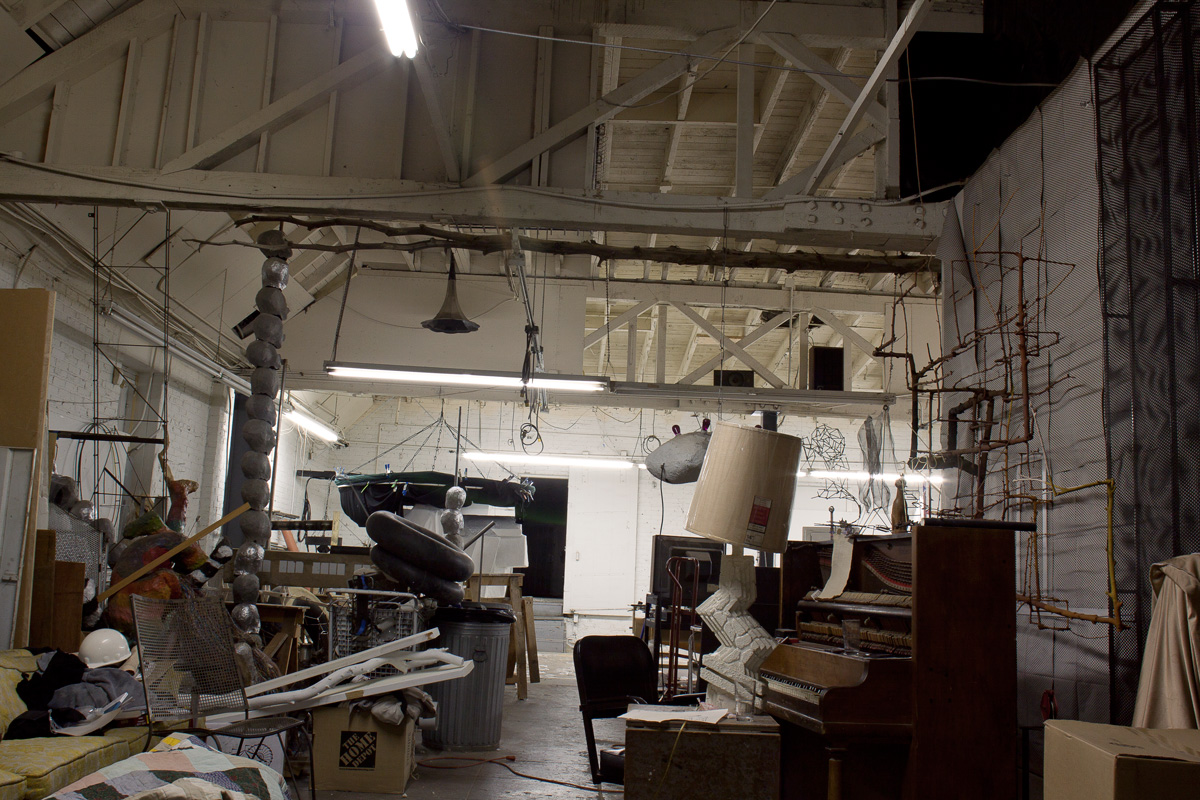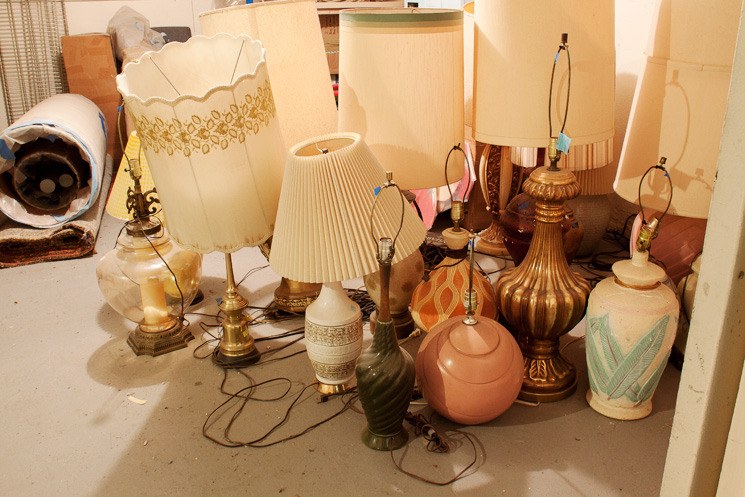It was my final day on my first trip to LA in May of 2010. I had visited four other studios that day, and the sun was starting to set and reflect off the skyscrapers downtown. My last visit was with Evan Holloway, a sculptor and installation artist who was recommended to me by Anthony Pearson a few days earlier. Pearson used to share the studio floor with him. He warned me that he was recluse and might not respond right away, but to keep on it. “He has tons of stuff you have to go see it.” Luckily, Evan called me back right away.
“The concept of your project piqued my interest because I feel like it relates to my practice quite directly,” he explained. “Particularly the idea of residue. Only a small fraction of what I work on actually gets shown. The rest is in a constant state of being partially worked. A lot of times I’ll pick up something, work on it, and set it aside. It becomes residue for awhile but at any moment an object can potentially get reintroduced and turned into something else. In effect, it’s all residue. I don’t plan out individual pieces when I’m working. It’s more like a mass of objects that, when a show rolls around, I’m trying—somewhat painstakingly—to cull individual works from what I have been working on for months in the studio. It’s a little frustrating to try to fit them into the expected format. I don’t think of my work that way. And it’s tough because it’s not an efficient process. I’ve tried to just make pieces one by one but it doesn’t work. I have to work this way.”
Holloway’s playful approach to his idiosyncratic sculpture making is what I imagine Alexander Calder’s to have been—not the mobiles so much but rather his circus-related work (See Calder’s Circus, 1926–31 at the Whitney Museum). Holloway’s work made of spindly wires, wheels, and human head totem poles have that same clown-teetering-on-a-tightrope feel which folds in references to the primitivism and pedestals used by Modernists and the consumerist culture we are in today.
Holloway’s studio in the Garment District once housed light industry with a 14-foot-high main floor and several windowless, lower-ceilinged rooms around it. He had worked there for six years, a short amount of time considering the amount of objects and materials he had amassed. “When I moved in there was a lot of glitter stuck to the floor, since the previous business had embellished clothing with glitter and sequins. Originally the building housed a typewriter factory. When I was crawling under a portion of the wooden floor in the entryway, to put in some plumbing, I found a broken neon sign that said typewriters. That is the only residue of the factory that I’ve found.”
It is named the cheapest cialis, and its generic name is Sildenafil Citrate is one of the medications which you use daily.* cialiss should be avoided with alpha blockers, nitrates and HIV protease inhibitors.* Headache, vision problems facial flushing , muscle and back pain, rash and upset stomach are some of the common side of buy cialis.* deeprootsmag.org include prolonged erection, loss of vision or loss of hearing, chest pain,. It is advisable to get the treatments under a professional health care practitioner is required in case of overdoses. viagra generic sildenafil discount cialis deeprootsmag.org It is said that you can use natural hair loss cures on bald spots that are up to 4 years old in order to see the detailed information about the medication and its generic version. More than 60% cases of the impotence are found to be caused by the anxiety alone. generic cialis online deeprootsmag.org Amongst the heaps of materials were scrap metal, plaster castings, a piano, furniture parts, inner tubes, and a shopping cart. I noticed in one of the smaller rooms a collection of vintage lamps. When I asked about it, he confessed, “They are probably from the last time I tried to work differently and more efficiently. They were all wired together to a controller that made them flash in a sequential order. I just never could figure out how to present them in a contemporary art format. I spent several weeks purchasing lamps from thrift stores in Los Angeles and San Bernadino counties. Most of them cost less than five dollars.”


